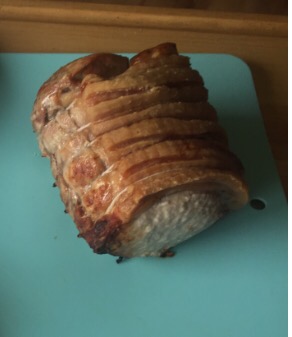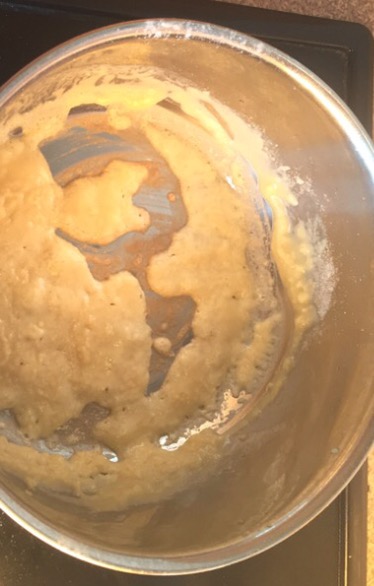We love sushi. I tried my hand at making it a few years ago. It was nice but just not quite right and it just looked a bit messy and unimpressive. So I never really felt the urge to try again.
However, a couple of weeks ago I decided to go for it again. I bought the sushi-making ingredients and thought I would have another go. The results both tasted and looked amazing. If you like sushi you should give this a go; it is easy and very tasty.
This recipe is for king prawn maki sushi and king prawn nigiri sushi. There are, of course, limitless fillings for your sushi. Just have fun with it and introduce your favourite flavours. This makes eight maki sushi and four nigiri sushi. This is a generous meal for one or a light lunch for two.
Sushi is also lovely and healthy. It is quite low calorie too. This whole recipe has about 700 calories so only 350 if shared between two for a light lunch. That is around 60 calories a piece.
Ingredients
125g sushi rice
165ml water
1.5 tablespoons rice wine vinegar
1 tablespoon sugar
0.5 teaspoon salt
12 king prawns (we used pre-cooked frozen king prawns)
Mayonnaise
Sweet chilli sauce
1 sheet sushi nori (dried seaweed)
Soy sauce, wassbi paste and sushi ginger to serve
Method
I am sure it is very much a cliche to say that sushi is all about the rice. But it is true; if the rice is not right then the sushi will not be right. However, it is fortunately very easy to get right (it has at least worked every time so far for me).
Firstly place your rice in a bowl and cover with water and swirl around to “wash” it and the use a seive to pour off the water. Repeat this another three times; you should see the water getting progressively less cloudy each time.
Now place the rice in a small saucepan along with the water. Bring this to the boil and simmer covered for ten minutes over a lowish heat. I give it an occasional shake to make sure the rice does not stick.
Once the ten minutes is up take the rice off the heat and leave it covered for at least 25 minutes.
Whilst the rice is cooling you should defrost your prawns (if using frozen) and prepare your rice seasoning. Mix the vinegar, sugar and salt together in a small cup or jug and leave to stand until the rice is ready.

Once the rice has cooked thoroughly mix in the seasoning mixture.

Now you can start to construct your sushi. Firstly prepare your prawns. Cut eight of them up into chunks for the maki sushi and butterfly the other four for the nigiri sushi. To do this (and I warn you that I am no expert at this😃) have the “back” of the prawn on the chopping board and then cut all the way through the prawn at either end whilst only cutting about two thirds of the way through the central section.

Now let’s start with the maki sushi. Now I don’t have any sushi making kit so I use a tea towel. Place the sheet of sushi nori on the tea towel.

Now spread rice over the sushi nori. It should be quite thin at about a quarter of an inch and should be as even as possible right to the edges of the sheet of seaweed whilst leaving about half an inch uncovered along the edge nearest to you and about one inch uncovered along the edge furthest away from you.

Now place the pieces of king prawn tightly together in a line on the rice about one third of the way up the rice.

Now place a line each of mayonnaise and sweet chilli sauce on top of the king prawns. I then sprinkled on salt and pepper too.

Now use the tea towel to roll the seaweed sheet up as tightly as possible, taking care to not let any filling escape the sides.

Just before it is fully rolled wet the uncovered section of seaweed (this will act as the glue to stick the roll together).

Leave the maki sushi to stand for a while.
Now make the nigiri sushi. Another weapon in my makeshift sushi making armoury is cling film. Place a sheet folded over on your surface and place the remainder of your rice on it.

Then form the rice as best you can into a long rectangular shape that is as firmly packed as possible.

Unwrap and cut the rice into four chunks. Place a butterflied king prawn on top of each piece and that is your nigiri sushi done. Easy👍

Now, using a very sharp knife (it really does need to be sharp otherwise you will squash rather than slice your maki sushi) slice the maki sushi into eight slices. If your knife is sharp enough then you should not need to put much pressure on the knife. You should be able to use a sawing motion and let the weight of the knife push through the roll.
And now you have some really quite professional looking king prawn maki sushi. Absolutely beautiful.

This really is a lovely meal. I drizzle soy sauce, spread a tiny bit of wasabi paste and place a little piece of sushi ginger on each piece. Not exactly traditional but it works for me😃
My wife leaves off the wasabi; it is firey stuff.
I am not going to do suggestions for altering this recipe. There are way too many. I will post them as I make them.
Enjoy😃










































